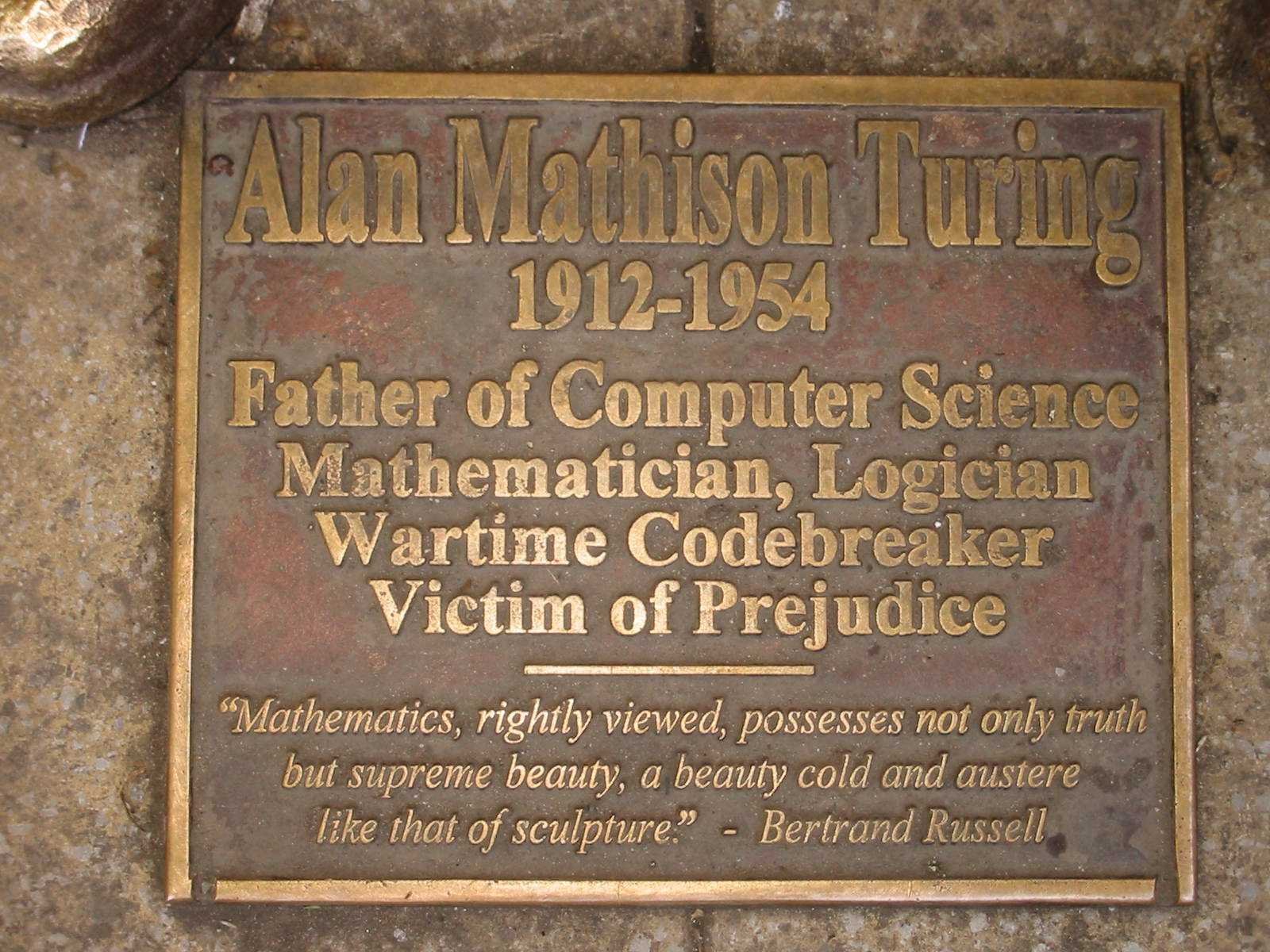In first part we have dealt with the great contribution of the Poles to the decryption of Enigma, which is often not mentioned in historical references. As you know, history is written by the winners!
In this part, the second of the entire tribute to the film The Imitation Game, we will deal with the British contribution to the deciphering of the Nazi code, and specifically with the protagonist of the whole case, Alan Mathison Turing. Who didn't just focus on breaking the Nazi code in an advanced way for the time, but through an obsession that came from the misunderstood for the time nature of, he invented what experts and scientists call “Turing machines” which were a form of what we call today, an electronic computer. The references to this particular period in history and to this particular person are impressive!
The beginning.
 Alan Turing was born on June 23, 1912. From an early age he showed his natural inclination towards mathematics. In 1928, at the age of just sixteen, he began to engage in research such as that of Albert Einstein and not just read it, but understood it and developed Einstein's questions in an unpublished text.
Alan Turing was born on June 23, 1912. From an early age he showed his natural inclination towards mathematics. In 1928, at the age of just sixteen, he began to engage in research such as that of Albert Einstein and not just read it, but understood it and developed Einstein's questions in an unpublished text.

In 1931 he reformulated the results of Kurt Gödel's completeness theorem, replacing Gödel's official language with what are now called Turing machines. He proved that such a machine would be able to compute any comprehensible mathematical problem if it could be represented by an algorithm. Turing machines are still the central object of study in computational theory. In 1936 he published the treatise "On Computable Numbers, with an Application to the Entscheidungsproblem”, which is recognized as his most brilliant work. In this article he proves that there are certain mathematical problems that cannot be solved by a fixed definite process, which he characterized as a process that can be performed by an automatic machine. Turing continued his studies in Mathematics at Princeton University in the USA and in 1938 he was awarded a doctorate in mathematics, with the thesis "Systems of Logic Based on Ordinals", under the supervision of Professor Alonzo Church. On graduation he accepted the post of Professor of Mathematical Logic offered to him at King's College, where he might have remained had it not been for the Second World War and the invention of the 'Turing machine'.
Entscheidungsproblem or, 10ο Hilbert's problem
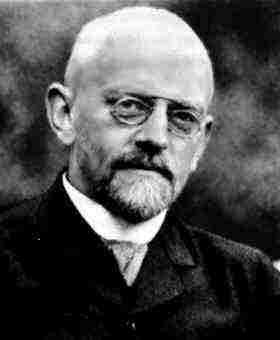
In 1900 in Paris, at the Second International Congress of Mathematicians, David Hilbert (1862 - 1943) in his lecture Mathematische Probleme raised 23 problems. Some of them have been resolved and some remain unresolved. Hilbert's tenth problem referred to the solution of Diophantine equations, that is, to the solution of equations of the form D (x1 , ..., xm) = 0, where D is a polynomial with integer coefficients. More specifically, Hilbert addressed his problem as follows: Given a Diophantine (with integer coefficients and with many variables) equation with unlimited unknowns, find a process (ie algorithm) by which in finite number of steps (ie to have a beginning and end, one of the ten principles of the definition of the Algorithm) we can decide whether the equation has integer solutions or not. Hilbert's tenth problem was solved in 1970 by Yuri Matiyasevich, who proved that there is no algorithm that decides whether a Diophantine equation has integer solutions or not. "There is no such process." The proof uses tools of Mathematical Logic and Number Theory. So the problem is unsolved because there is no programmed "Turing Machine" that can solve it.
World War II and Bletchley Park.
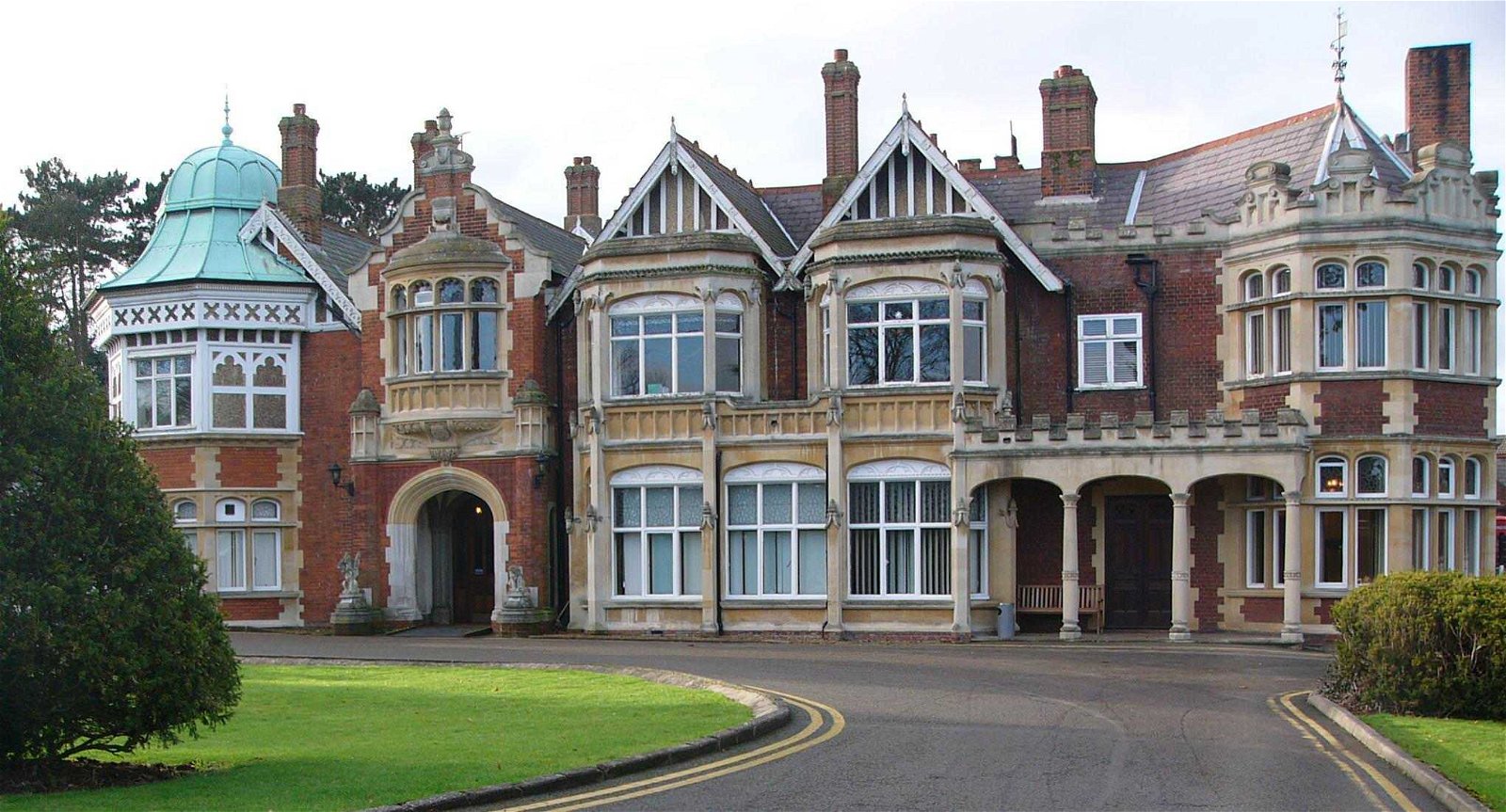
Bletchley Park is a Victorian mansion located 80 km northwest of London. It was bought in 1938 by the head of the British intelligence service MI6 and Admiral Sir Hugh Sinclair, προκειμένου να στεγαστεί η G.C. & C.S. (Government Code and Cypher School), πήρε τη κωδική ονομασία “Σταθμός Χ”. Καθώς πλησίαζε ο Β'ΠΠ, 186 άτομα εργάζονταν στο Bletchley Park, 50 ειδικεύονταν στην κρυπτογράφηση και τα υπόλοιπα στην κρυπτανάλυση. Ενώ ο πόλεμος μαινόταν στην Ευρώπη, ο αριθμός των μηνυμάτων που στέλνονταν απο τους Γερμανούς και τους συμμάχους τους, πολλαπλασιάστηκε. Η κατάσταση αυτή έγινε πιο σύνθετη από το γεγονός ότι κάθε στρατιωτική υπηρεσία χρησιμοποιούσε διαφορετική παραλλαγή της μηχανής Enigma για να κρυπτογραφήσει τα μηνύματά της δημιουργώντας τεράστιο όγκο εργασίας για το προσωπικό στο Bletchley Park. Με εντολή του πρωθυπουργού Ουίνστον Τσόρτσιλ, ο αριθμός των αποκωδικοποιητών που απασχολούνταν αυξήθηκε. Το 1943, άντρες και γυναίκες μαθηματικοί και γλωσσολόγοι, από τα πανεπιστήμια της Οξφόρδης και του Κέμπριτζ, ένωσαν τις δυνάμεις τους με Αμερικανούς αποκωδικοποιητές καθώς και οι Η.Π.Α μπήκαν στον πόλεμο. Τον Μάιο του 1945 περίπου 9.000 άτομα ασχολούνταν αποκλειστικά με την κρυπτογραφία, συν 2.500 ακόμα, που εργάζονταν σε άλλα παρεμφερή θέματα.
This rapid increase in staff required more work space in Bletchley Park. Stumps and ancillary buildings were constructed, which were distinguished by a number or letter.
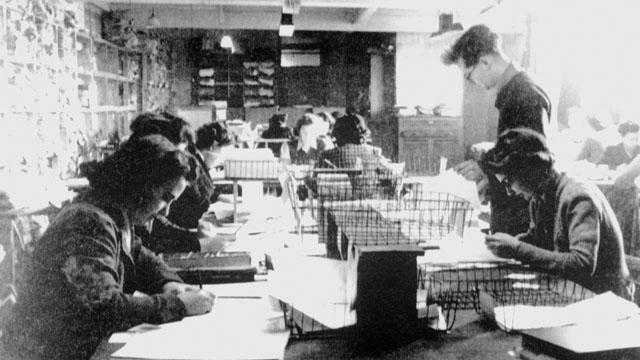
The 6 Parachute was focused on breaking the German Army and Aviation messages. In Group E, the decrypted and translated messages were encrypted again and transmitted to the Allies' leaders.
In Paragraph 8, it housed cryptanalysts dealing with the decryption of German Navy messages. It was the stump where Turing worked with his team.

Breaking Enigma with Boba
To decrypt an Enigma message, the recipient - and the eavesdropper - needed to know:
- Which redeemers were selected.
- Their position on the machine.
- Where the teeth were placed.
- Which boot position was used for each reorder.
- Which letters were alternating with the use of plugs.
The biggest challenge for Bletchley Park decoders was the growing number of plugged pairs. For each rearranger setting, there were more than 3010 plug panel settings. This seemingly impossible task was made easier by the invention of an electric device (called "Boba" recalling the Polish machine, but it was very different). by Cambridge mathematicians Alan Turing & Gordon Welchman.
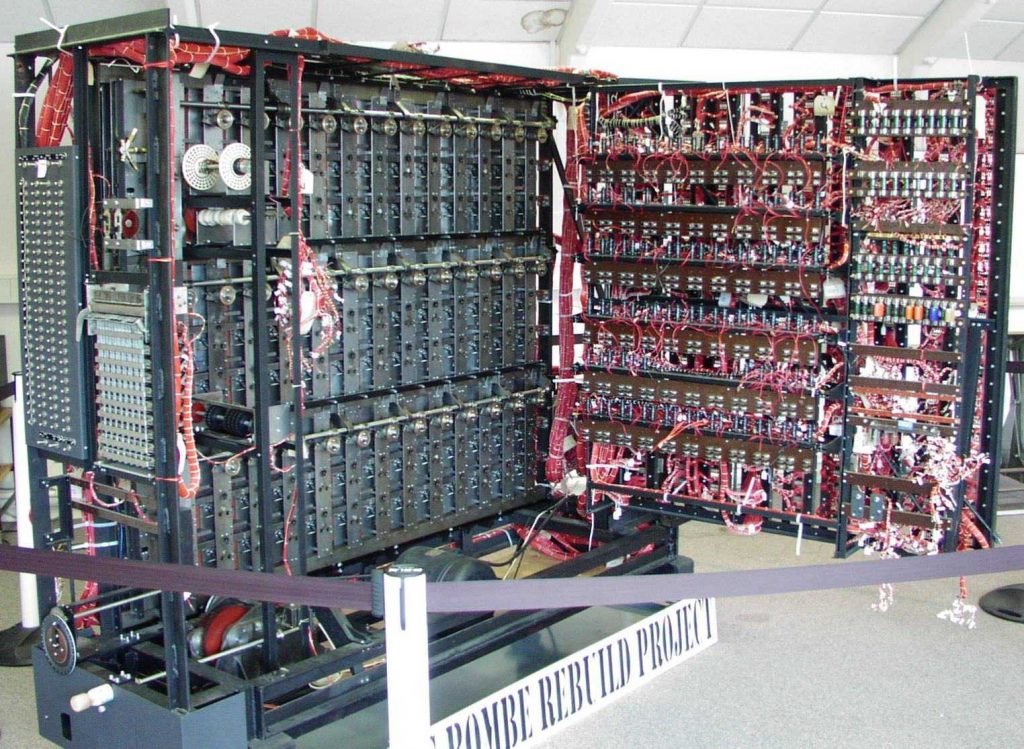
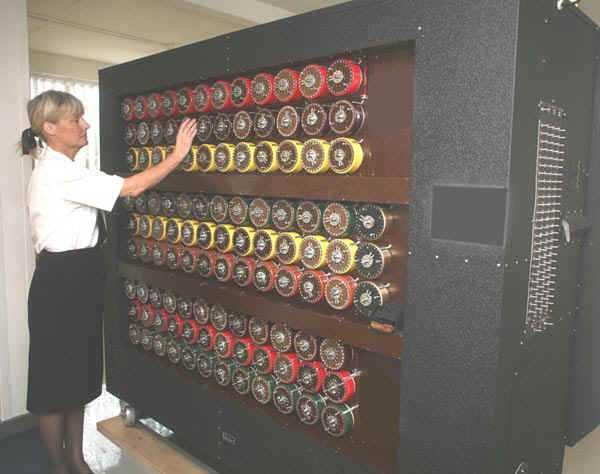
Of essential importance for its performance was the correct detection of the "blindfold": the combination of a normal part of text with an encrypted one. E.g. when someone writes a letter, they usually start it with "Dear Sir/Madam" and end it with "Sincerely yours", let's say it's a "protocol" to write a letter, the same "protocol" it also applied to the coding of German forces' messages, although the building blocks were often different. Many messages the Germans began with the word "secret", messages from warships began with the word "weather". Many operators often coded the word “ist” – German for “is” – in the text of the messages. Others do name of their favorite as the starting point of the rearrangers. As an example in the film, the English understood that the last two words of each message were "Heil Hitler" coded. With the discovery of correctly coded words in the text, the number of search settings required has been significantly reduced. So by getting the right keywords into the "bob", they had the desired effect. In short, this protocol, coupled with the Germans' belief that Enigma is inviolable, led to its defeat.
Another interesting technique at Bletchley Park, was "gardening". With this they tried to provoke the German forces to include well-known words in their messages. E.g. if an area had been cleared of mines, Bletchley Park decoders were causing the army to mine again in the hope that the Germans would use the word "minen" in messages about the area.
His first message Enigma violated at Bletchley Park on January 20, 1940, but it was vital that they did not let the Germans realize that the Allies could now read the Enigma. To hide the existence and success of Bletchley Park the British government invented a spy named Bonyface and a system fake agents in England. The purpose was to send messages to various parts of the British Army that Bonyface, or one of his spies in Germany, had overheard a conversation between high-ranking German officers or found a classified document in a rubbish bin. In this way, information leaked to the Germans would convince them that their wireless signals were intercepted by agents, while their coded messages remained inviolable. In fact, the British led the Germans on a ghost hunt! Another way for the English to protect this secret was when they were subjected to a serious message of an attack by the Germans, they were taking care to react after they had sent their spy aircraft and after seeing them become visible to the Germans, so the Germans believed had been perceived by the aircraft rather than how their messages were decrypted.
By the end of the war, the Bletchley Park team had deciphered more than two and a half million messages and contributed significantly to the victory of the Allies. The war in the Atlantic and the landing in Normandy would have had a different outcome without the ability to decode German messages.
WWII ends in September 1945 with the capture of Berlin and Hitler's suicide. In addition to the unimaginable devastation left behind by a world war (the second world war in almost 30 years along with WWII), it also left behind many innovations, one of which was the progress made in cryptography at Bletchley Park . Progress which was kept a top secret by the British for almost 50 years after the end of the war. Everything that was done and written in the WWII period was destroyed. Only two "bomb" type machines were kept for the later decryption of Stalin's messages during the cold war, so the British insisted on keeping this secret even after the war. The last two machines were destroyed in 1960.
The post-war Alan Turing
On February 19, 1946 he presented a work, which was the first complete design of a computer. Although he succeeded in designing the automatic calculator, there were delays in starting the program and he was disappointed. In late 1947 he returned to Cambridge for a year. While in Cambridge, the construction of the automatic calculator stopped before it could begin.
In 1949 he became Deputy Director of the Computing Laboratory at the University of Manchester, and worked on the software for one of the first real computers - Manchester Mark H. During this time he continued to do more abstract work and calculating machines and intelligence. Turing tackled the problem of artificial intelligence, and proposed an experiment known today as Turing test, an attempt to set standards for a machine called thinks.
Turing did not have time to see his works completed. Following a burglary at his home, a police investigation revealed that Turing had an affair with the 19-year-old who broke into his home. Turing was accused of sexual perversion and was forced to choose between jail time and hormone therapy. In 1950 England homosexuality was a crime and punished. After his public deportation, on June 7, 1954, he committed suicide with cyanide, probably from a half-eaten apple that contained it.
The Turing Award is given in honor of Alan Turing by the Computing Machines Association (Association for Computing Machinery) to a scientist every year from 1966 and then, "for his technical contributions to the calculation community". It is considered the equivalent of the Nobel Prize in Computer Science.
A statue of Turing was unveiled in Manchester on June 23, 2001. It is located in Sackville Park, between the University of Manchester building on Whitworth Street and a gay downtown area.
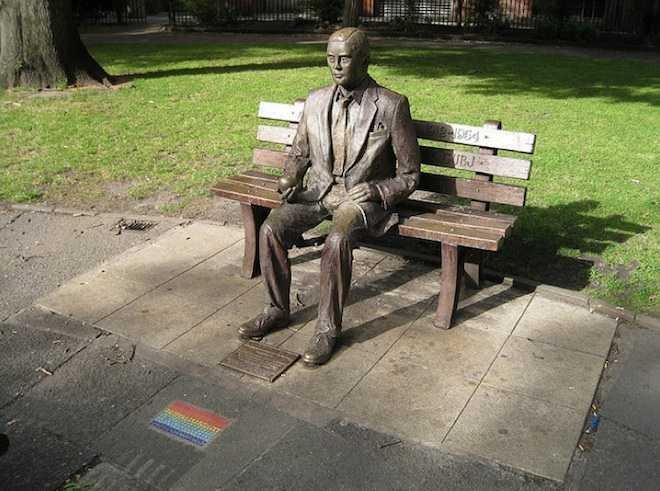

To honor 50ή On the anniversary of his death, the University erected a memorial plaque at his former residence in Wilslow on June 7, 2004, and a celebration of Turing's life and achievements was also held by the University of Manchester on June 5 of that year. .
On September 10, 2009, the then Prime Minister of the United Kingdom Gordon Brown publicly apologized on behalf of the British government for the behavior of the state towards Alan Turing, under the pressure of a relevant campaign to collect signatures from individuals.
On 24 December 2013, Elizabeth II pardoned him.
End
The "bobby" wasn't Alan Turing's only creation, we just focused on it on the occasion of the movie, there was an even more important project, Colossus, the first programmable computer, (usually sounded like the American ENIAC, but not valid. It took the scepter simply because Colossus was hidden) that indirectly helped with its execution, led by Thomas Flowers and helped decipher another equally important Nazi cryptographic machine, Lorenz. We will make sure to analyze it in another article.
Also until his death he worked on mathematical biology and morphogenesis, eg the shape of the lines on the Zebra that to this day concerns biologists. He published a paper on the subject, entitled "Chemical basis of morphogenesis" in 1952. His central interest in the field was the existence of Fibonacci numbers in plant structures. Use the reaction-diffusion equations that are now central to the formation of patterns. These writings were unpublished until 1992 when Turing's work was compiled.
The film conveys a message, trying to defend its controversial nature. Alan Turing had discovered his sexual peculiarity from a young age and was even in love with his classmate Christopher Morcom. Christopher Morcom died of tuberculosis and Turing never recovered. He named many of his later projects Christopher for Christopher Morcom. With the Imitation Game, Turing's attempt to bring Christopher Morcom back "artificially" through a machine is projected. The whole project was called "artificial intelligence", the art that through computing and programming, a computer talking to a person, can lead that person to the idea that he is talking to another person and not a computer. This is the Turing Award.





